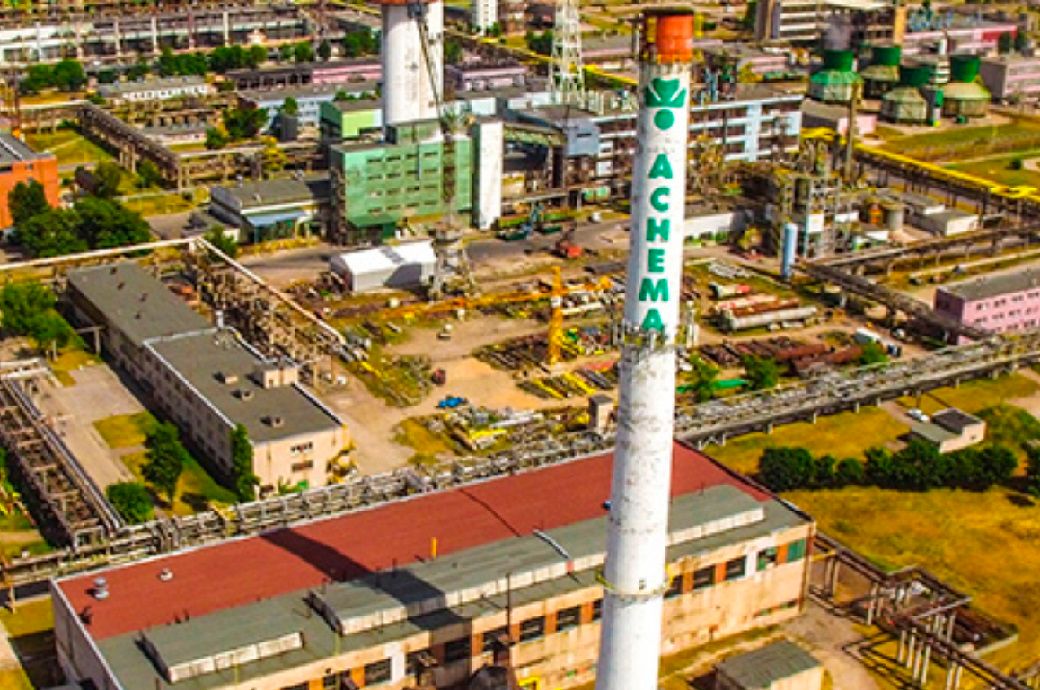The European Commission has approved, under EU State aid rules, a €122 million (~$133 million) Lithuanian measure to support AB Achema in decarbonising its fertiliser production processes. The measure will contribute to the achievement of the EU Hydrogen Strategy, the European Green Deal and the Green Deal Industrial Plan targets, while helping to end dependence on Russian fossil fuels in line with the REPowerEU Plan.
The Lithuanian measure
The European Commission has approved a €122 mn (~$133 mn) Lithuanian state aid measure to support AB Achema in transitioning to renewable and low-carbon hydrogen for fertiliser production.
This initiative, funded through the Just Transition Fund, aims to reduce CO2 emissions by replacing natural gas-based hydrogen with electrolysis-derived hydrogen.
Lithuania notified to the Commission a €122 million measure to support AB Achema’s project aimed at replacing fossil-based hydrogen by renewable and low-carbon hydrogen in its fertiliser production processes. The measure will be made available through the Just Transition Fund.
The aid will take form of a direct grant to support the installation a 171 MW alkaline electrolyser at AB Achema’s production site in the Kaunas region of Lithuania. Currently, AB Achema uses natural gas-based hydrogen to produce ammonia, a key input in the production of fertilisers. The electrolyser will produce renewable and low-carbon hydrogen that will be used to produce ammonia. The hydrogen produced by the electrolyser will replace 30% of the hydrogen currently produced from natural gas, thereby reducing carbon dioxide (‘CO2′) emissions and demand for natural gas.
The electrolyser is envisaged to start operating in 2026. Once completed, the project is expected to avoid the release of at least 5.8 million tonnes of CO2 over the 19 years of expected operation of the electrolyser.
AB Achema committed to actively share the experience and technical know-how gained as a result of the project through publications and conferences to contribute to the deployment of clean technologies in the fertilisers industry.
The Commission’s assessment
The Commission assessed the measure under EU State aid rules, in particular Article 107(3)(c) of the Treaty on the Functioning of the EU (‘TFEU’), which enables Member States to support the development of certain economic activities subject to certain conditions, and the the Guidelines on State aid for climate, environmental protection and energy (‘CEEAG’), which allow Member States to support measures reducing or removing CO2 emissions.
The Commission found that:
– The measure facilitates the development of an economic activity, namely the production of fertilisers through low-carbon processes. At the same time, it supports the objectives of key EU policy initiatives such as the European Green Deal, the EU Hydrogen Strategy, the Green Deal Industrial Plan and the REPowerEU Plan.
– The aid has an ‘incentive effect’, as the beneficiary would not invest in the electrolyser without the public support.
– The measure is necessary and appropriate to promote the production of fertilisers with reduced CO2 footprint. In addition, it is proportionate, as the level of the aid corresponds to the effective financing needs.
– The measure has sufficient safeguards to ensure that undue distortions of competition are limited. In particular, if the project turns out to be very successful, generating extra net revenues, the beneficiary will return to Lithuania part of the aid received (claw-back mechanism). Moreover, the beneficiary will disseminate the technical know-how gained as a result of the project.
– The aid brings about positive effects that outweigh any potential distortion of competition and trade in the EU.
On this basis, the Commission approved the Lithuanian measure under EU State aid rules.
Background
The 2022 CEEAG provide guidance on how the Commission will assesses the compatibility of environmental protection, including climate protection, and energy aid measures which are subject to the notification requirement under Article 107(3)(c) TFEU.
The guidelines create a flexible, fit-for-purpose enabling framework to help Member States provide the necessary support to reach the Green Deal objectives in a targeted and cost-effective manner. The rules involve an alignment with the important EU’s objectives and targets set out in the European Green Deal and with other recent regulatory changes in the energy and environmental areas and will cater for the increased importance of climate protection.
With the European Green Deal Communication in 2019, the Commission set an objective of net zero emissions of greenhouse gases in 2050 that is enshrined in the European Climate Law. In force since July 2021, the law also introduced the intermediate target of reducing net greenhouse gas emissions by at least 55% by 2030. Through the adoption of the ‘Fit for 55′ legislative proposals, the EU has in place legally binding climate targets covering all key sectors in the economy.
In July 2020, the Commission published its EU Hydrogen Strategy, setting ambitious goals for clean hydrogen production and use, and launched the European Clean Hydrogen Alliance, bringing together the European hydrogen community (industry, civil society, public authorities).
In February 2023, the Commission published the Green Deal Industrial Plan to enhance the competitiveness of Europe’s net-zero industry and support the fast transition to climate neutrality.
The non-confidential version of the decision will be made available under the case number SA.108431 in the State Aid Register on the DG competition website once any confidentiality issues have been resolved. New publications of state aid decisions on the internet and in the Official Journal are listed in the Competition Weekly e-News.
Quote(s)
This €122 million measure enables Lithuania to help AB Achema step up its renewable and low-carbon hydrogen capacities. This will contribute to the greening of the fertilisers value chain, in line with the EU’s target of climate neutrality by 2050. At the same time, the measure ensures that any potential competition distortions are kept to the minimum.
Margrethe Vestager, executive vice-president in charge of competition policy
Note: The content of this press release has not been edited by Fibre2Fashion staff.
Fibre2Fashion News Desk (HU)

